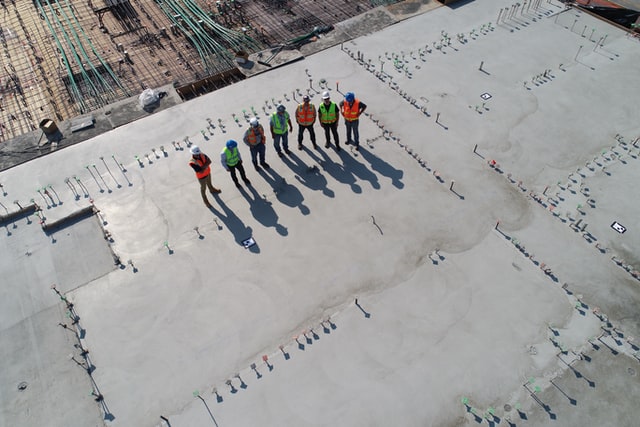The internet of things (IoT) is connecting devices and sensors to the internet so that they can communicate with each other and share data. This interconnectedness is transforming how we live, work, and play. In the future, IoT sensors will become more ubiquitous and sophisticated, collecting ever-more detailed data about our environment.
With the rise of global, smart cities, the additional strain on infrastructure due to changing environmental impacts, and growing populations, the hunger for high-quality, timely data has never been greater.
As a market, the Internet of Things (IoT) is predicted to reach over $50billion worldwide by 2025. IoT sensors are becoming increasingly prevalent as IoT grows. With so many devices now connected to the internet, there’s a vast amount of data that can be collected and used to improve decision-making. Digitising our environments in this way as we shape our smart cities, will mean we have quantitative data at our fingertips for optimising everything from the flow of traffic, resources, services, and beyond.
But, where does that leave the role of engineers?
The opportunities for engineers are vast as we move towards an increasingly digitised world. Let’s explore some ways these will evolve in the not-so-distant future.
Qualitative advice with a solutions focus
By leveraging IoT sensor technology, the role of the engineer will change to focus more on qualitative advice, using the data collected to provide expertise and engineering solutions. There’ll be a move away from guesswork and towards informed decision-making based on accurate, near-real, and real-time data. This is a huge shift that will see engineers working more closely with data analysts and scientists to create solutions.
The main benefit of this shift means creating greater value, through some pretty key efficiencies that will drop straight to the bottom line:
- Planning cycles will be shortened
- Construction programs will become more efficient
- Resources can be allocated more accurately
Saving time and money like this will create new opportunities for engineers to deliver value for stakeholders and clients. The data collected by IoT sensors will provide a level of insight and understanding that was previously unavailable or cost-prohibitive. Quantitative advice based on educated best guesses and assumptions will shift to a qualitative advisor who can use the data collected by IoT sensors to provide accurate and timely recommendations.
Artificial intelligence will become an engineer’s new best friend
Processing such vast amounts of data from IoT sensors quickly will be the job of Artificial Intelligence (AI). Engineers will need to partner with data scientists and learn new skills to be able to understand and work with AI. This way, they can use the data from IoT sensors to automate tasks, make predictions about future events and get real-time insights into what’s happening on site.
Using AI-processed data in new ways is already starting to happen in many industries. For example, construction workers are using augmented reality (AR) headsets which give them access to data about the building they are working on. This includes things like where pipes are located or the strength of foundations. This data is processed by AI to give the workers the information they need to do their job more safely and efficiently.
IoT sensors will also change the way we interact with our environment. Instead of relying on human observation, we’ll be able to get real-time data about what’s happening around us. This will allow us to make better decisions about how to respond to changes in our environment.
Higher quality and lower costs will drive faster adoption
With faster, better internet speeds (driven by the growth of 5G and soon-to-be-established 6G networks), and lower latency connectivity options (for example, via Starlink), combined with decreasing costs as innovation proliferates, it’s likely that we’ll see an exponential increase in the number of IoT sensors being deployed. This will have a profound – and rapid – impact on how engineers do their job.
This data-driven approach will result in a more efficient and effective engineering process, with fewer errors and rework. It will also lead to improved safety outcomes, as the data collected by IoT sensors can be used to identify potential risks and hazards before they result in an incident.
The engineer of the future will be a data-savvy problem solver, able to acquire data from places that were previously inaccessible, too costly, or perhaps not yet considered to be useful. With the help of AI, they will be able to make sense of this data quickly and use it to improve decision-making, drive efficiencies, and deliver value.
The future looks bright for engineers
IoT sensors are set to change the landscape of engineering, and the role of the engineer within it – and it’s incredibly exciting. With access to accurate data, engineers will be able to provide more informed advice and solutions that can help change the way we live and work for the better.
It’s a shift that will require a different skill set from engineers, who will need to be comfortable working with large amounts of data and be able to interpret it to make informed decisions. But it’s a shift that will ultimately result in a more efficient, effective, and safe engineering process. And that can only be a good thing.
This is just the beginning for IoT sensors. As the technology continues to develop, we will see even more amazing applications for these devices. The future of engineering is looking very exciting! Thanks to IoT sensors, we are on the brink of a new era of data-driven decision-making that will revolutionise the way we design and build things.
Looking for low-cost, IoT sensors to monitor displacement? Kurloo is an end-to-end system that cleverly combines IoT and GNSS to deliver precise positioning in near-real-time on any device, any time. Talk to us today about how Kurloo can help improve the way you work.
